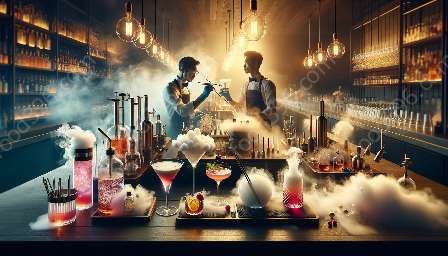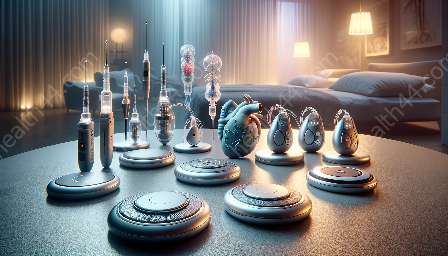Molecular mixology and the use of gases have revolutionized the art of cocktail making, offering a cutting-edge approach that combines science and flavor innovation. This topic cluster delves into the intriguing world of molecular mixology by exploring its techniques, processes, ingredients, and the significant role of gases in creating modern and imaginative cocktails.
Understanding Molecular Mixology
Molecular mixology is an avant-garde bartending concept that applies scientific principles and techniques to the creation of cocktails. It involves the use of innovative tools, ingredients, and methods to transform traditional drinks into visually stunning and sensorially captivating concoctions. The approach is characterized by the manipulation of textures, flavors, and aromas through the utilization of modern culinary technology.
Key Components of Molecular Mixology
- Techniques: Molecular mixology encompasses a range of techniques such as spherification, foaming, gelification, emulsification, and rapid infusion, which allow bartenders to push the boundaries of creativity and experimentation.
- Ingredients: Unconventional ingredients such as agar-agar, xanthan gum, liquid nitrogen, and edible acids are often employed in molecular mixology to achieve unique textures and unexpected flavor profiles.
- Equipment: Specialized equipment like vacuum sealers, rotary evaporators, and molecular gastronomy kits play a crucial role in facilitating the precise execution of molecular mixology techniques.
The Role of Gases in Molecular Mixology
Gases play a pivotal role in molecular mixology, contributing to the creation of novel textures, foams, and infusions that redefine the possibilities of cocktail crafting. Utilizing gases allows mixologists to introduce elements of surprise and delight to their creations, elevating the drinking experience to new heights.
Types of Gases Used in Molecular Mixology
Nitrous Oxide (N2O): Commonly known as laughing gas, nitrous oxide is utilized to create velvety foams and airy textures in cocktails, adding a luscious mouthfeel and visually striking presentations.
Carbon Dioxide (CO2): Carbon dioxide is employed to carbonate liquids and generate effervescence, resulting in bubbly and refreshing beverages that captivate the palate.
Liquid Nitrogen (LN2): Liquid nitrogen is a versatile tool in molecular mixology, allowing for rapid freezing, the creation of theatrical effects, and the preparation of ultra-cold cocktails with a mesmerizing visual appeal.
Exploring Molecular Cocktails
Molecular cocktails are the hallmark of molecular mixology, representing an amalgamation of unconventional techniques, avant-garde ingredients, and artistic presentations. These cocktails embody the spirit of innovation and offer an immersive sensorial journey that transcends the conventional drinking experience.
Characteristics of Molecular Cocktails
- Visual Appeal: Molecular cocktails are celebrated for their visually captivating appearance, often featuring striking colors, intriguing textures, and whimsical garnishes that defy traditional norms.
- Flavor Complexity: The use of molecular techniques allows for the creation of multi-layered flavor profiles, surprising taste sensations, and unexpected combinations that challenge the palate and stimulate the senses.
- Theatrical Presentations: Molecular cocktails often incorporate theatrical elements such as vapor, smoke, or molecular garnishes, adding an element of spectacle and drama to the drinking experience.
Embracing Innovation in Mixology
The fusion of science and artistry in molecular mixology exemplifies the boundless possibilities of cocktail innovation. By embracing the use of gases, avant-garde techniques, and unconventional ingredients, mixologists continue to push the boundaries of traditional cocktail making, ushering in a new era of creative libations that captivate and inspire.


